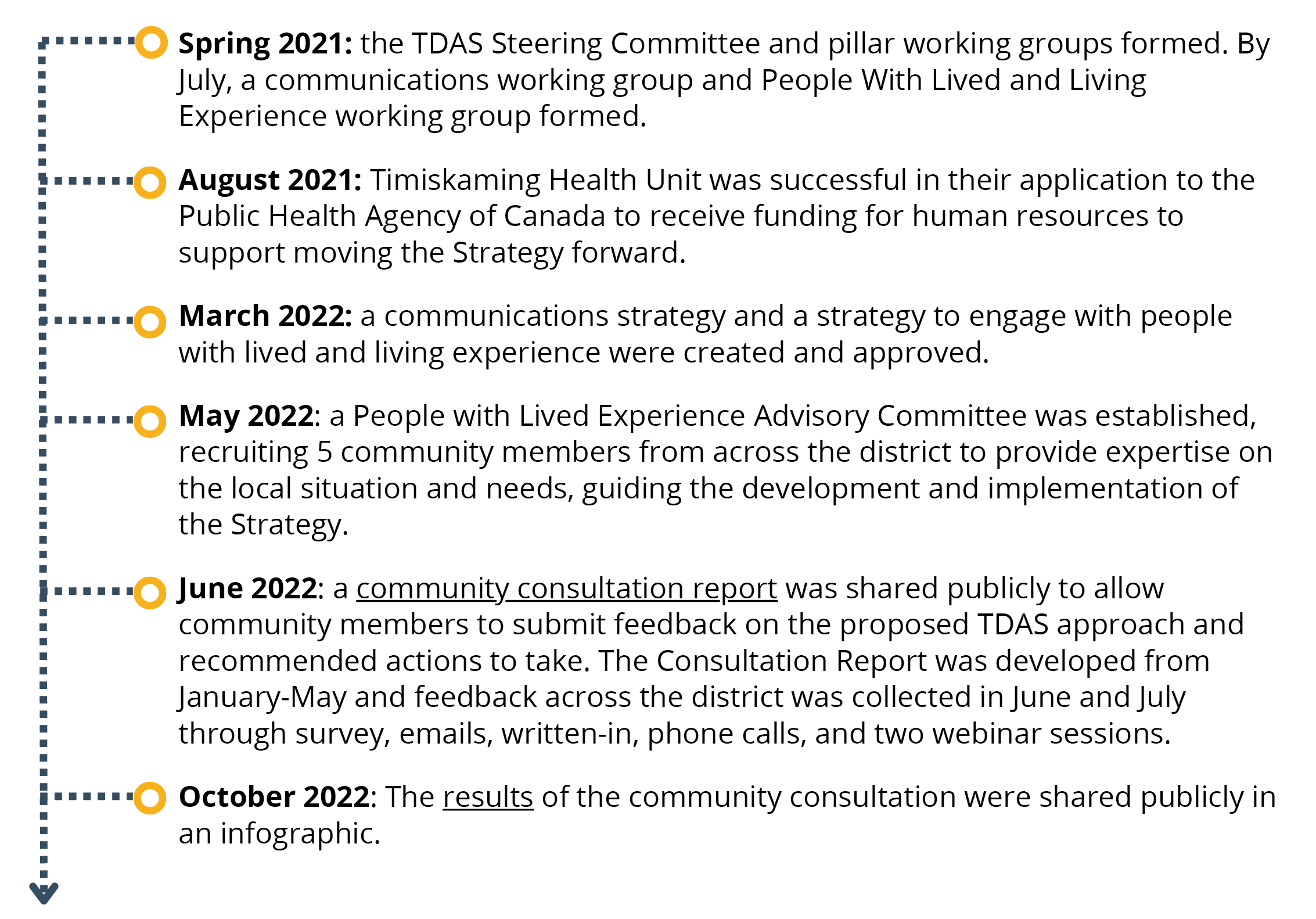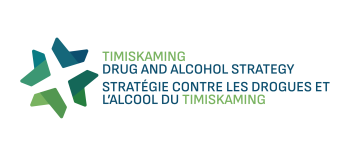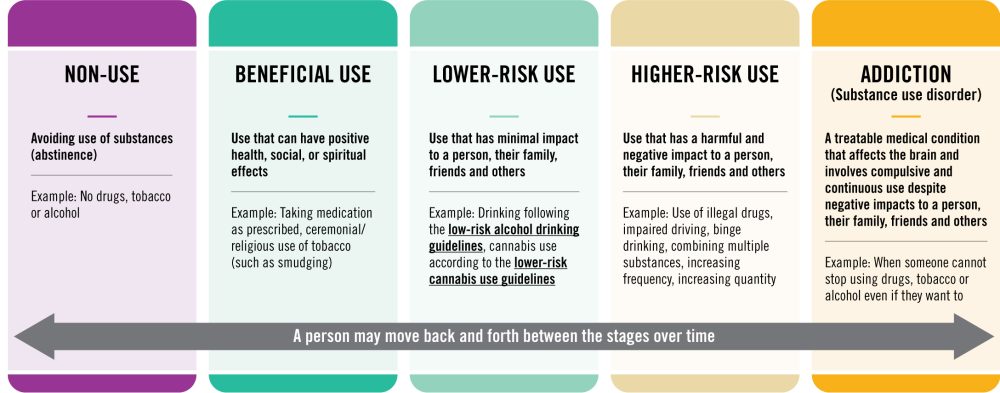About
Introduction
The driving force behind high-risk substance use is very complex and greatly impacts the health and safety of individuals and society. It has been shown that certain living and working conditions influence the likelihood of substance use issues in a person’s life. For example, life and working conditions such as poverty, food insecurity, traumatic experiences, unemployment, homelessness, and others all increase the risk of high-risk substance use. The negative effects of substance use impact all levels of society – individuals, family and peers, and communities. An effective response to this complex issue needs to be collaborative and comprehensive with a suite of interventions focused on substance use health.
The Spectrum of Substance Abuse
People use substances for different reasons. It could be to relax, have fun, experiment or cope with stress and pain. For some, there may not be any harms related to their substance use, however, for others there may be negative effects on their lives. People can move from one stage of substance use to another, and it is not always in the order of those listed below.
While this spectrum includes beneficial and low-risk use, the focus of the TDAS is to prevent and reduce the harms and negative impacts linked with substances.
In early 2021, TDAS was formed to better understand the local context of substance use and the associated harms. Since then, a lot of work has been carried out to assess available information, gather more, and create a Strategy that is truly for Timiskaming and by Timiskaming. The purpose of this Strategy is to build on the existing efforts in the Timiskaming area, inclusive of Temagami.
Background
Goal
To prevent and reduce the harms associated with substance use to improve the quality of life of all Timiskaming residents.
Guiding Principles
All work is being guided by the following nine principles:

Current Membership
The Strategy membership consists of over 20 community organizations and people with lived and living experience. Sectors represented include mental health and addictions treatment services, Indigenous services, child and family health services, social services, municipalities, community members, family health teams, hospitals, school boards, police, and public health.Structure
Structure
The Strategy is supported by a Steering Committee, four pillar working groups, three other working groups, and is grounded in an evaluation and surveillance framework. The Steering Committee provides leadership in the development, implementation, and evaluation of the strategy. It supports connecting the work of the four pillars, ensures all work is in alignment with our guiding principles and that the TDAS is evidence-informed with the opportunity to innovate. Some of the key roles of the Steering Committee include:
- Communication: Developing a website and brand as well as coordinating and supporting communication strategies across pillars where indicated.
- Shared Measurement: Coordinating and supporting data collection which includes monitoring, surveillance, and an evaluation strategy to support TDAS performance, continuous improvement and accountability, and a common agenda that is responsive to current and emerging needs.
- Support the early warning system related to drug poisonings.
- Explore next steps related to a strong mental health theme identified in the local community consultation.
- Explore the feasibility of local application of the recommendations put forward by Canada’s Expert Task Force on Substance Use for the national drug strategy
The pillar working groups are responsible for ensuring a comprehensive and coordinated approach is taken to plan and implement the Strategy. The pillar working groups are guided and directed by the Steering Committee. The other working groups have been established to provide support across all entities of the TDAS structure. In particular, the People with Lived and Living Experience Advisory Committee participates on all pillar working groups and the Steering Committee, in addition to providing expertise on all TDAS documents and processes.
An evidence-informed framework is being used to ensure a coordinated and comprehensive approach. The four pillars work together to address community needs and create solutions that make sense in the local context.

Prevention
Prevent high-risk substance use.
Harm Reduction
Reduce the negative effects of substance use without requiring a person to quit.
Community Safety
Reduce criminal activity and community safety issues associated with substance use while developing trusting relationships with all community members.
Treatment
Support innovative approaches to treatment and recovery.
History
Since Spring of 2021, TDAS members have worked together to understand the situation in Timiskaming related to substance use and its harms and to find solutions to improve the health and wellbeing of residents. The work that has taken place to get to this point of releasing the Strategy is summarized below. Since forming, environmental scans, literature reviews, and ongoing knowledge exchange have occurred. This work is continuous in our pursuit to create and implement a Strategy that is responsive and evidence informed.
Each step has led to the creation of this current TDAS document. Moving forward, the TDAS will remain flexible to respond to and prioritize emerging needs, positioning itself to keep the needs of residents and resources of local services at the center of its work. It is important to recognize that there is potential to intersect with other local strategies and initiatives such as Timiskaming’s Community Safety and Wellbeing Plan and the Indigenous Mental Health and Wellness Strategy (in progress). Opportunities to work with others and avoid duplicating efforts will continue to be identified.


